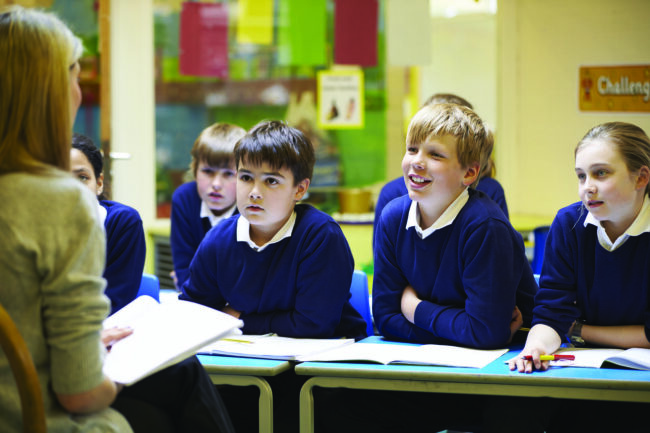Education has changed significantly in the last decade. Just ten years ago, smartboards were cutting edge. Personal tablets or computers in classrooms were rare or even disallowed, and phrases like “remote learning” didn’t exist.
Covid has certainly played its part in reshaping the modern educational system, but the current school landscape is being influenced by many factors.
In this article, we take a look at three of the many ways the American educational system is changing.
Hybridization
Thanks to Covid-19 virtually every classroom in the country is now ready to pivot into remote learning at the drop of a hat. Even as coronavirus infections recede, this technology proves valuable to students who might have otherwise needlessly missed instruction.
The ability to shift seamlessly into remote work allows classrooms to:
Adjust in the Event of Infections
While there aren’t any indications that school closings will be widespread the way they were in the Spring of 2020 again, there are still pocket closures. When one student tests positive in a class, the response is often to quarantine the entire classroom for the duration of the recommended period.
Thanks to remote work technology, students impacted by these policies can continue to learn, even from home.
Adapt to Unforeseen Circumstances
Remote learning technology also allows schools to easily respond to unforeseen circumstances, like a snow day. Now, administrators no longer have to make difficult decisions about if they should close school. If conditions seem at all risky, they can simply pivot into remote learning.
It is worth acknowledging that remote learning has not proven to be a good substitution for everyone. Students who struggle with academics tend to fall further behind when they are taken out of their classrooms.
Remote learning environments may also be unsuitable for students who depend on free lunches and breakfasts at their school for meals.
School districts all around the country are continuing to look for ways to better serve their students with remote learning. In the meantime, the educational system is in the middle of what could prove to be one of the largest case studies ever conducted on a new approach to learning. What impact does hybrid or remote teaching have on students?
It may be decades before there is a decisive answer to that question. For now, students at least have some access to educational materials in situations where they might not have had any at all.
STEM
Schools all around the country, and indeed, all around the planet have made a clear and decisive shift toward incorporating STEM-related materials throughout their curriculum. This is due both to the fact that the US has fallen significantly behind many other large nations in the departments of science, technology, engineering, and mathematics, and because these fields are expected to factor heavily in the majority of lucrative career paths going forward.
Naturally, science and math have always been core elements of the American educational system. Now, however, they are being weaved throughout lesson plans in various disciplines to ensure that children are getting regular, consistent education in these fields.
Currently, the United States has fallen behind in STEM learning—particularly over the last several years. While this decline may owe primarily to the pandemic, it remains a troubling development for educators who are trying to enhance their students’ understanding of STEM subjects.
Health and Wellness
US classrooms have also begun to emphasize mental and physical wellness in students. This emphasis has taken many forms. In terms of physical health, many schools are now under strict lunch requirements that prohibit the distribution of unhealthy snacks or meals. This means fewer vending machines, and more fruits and vegetables.
Teachers have also begun to focus on their students’ mental and emotional health by implementing mindfulness activities, and other stress-reducing behaviors that have the potential to improve their learning and make them feel better in the process.
Naturally, health and wellness initiatives are imperfect and imprecise. Educators are not necessarily equipped with the training required to help students truly maximize their mental and emotional health. Nevertheless, as schools continue to commit to nurturing both bodies and minds, it could mean good things for today’s students.
Photo Credit
Image by 14995841 from Pixabay
Guest Author Bio
Sarah Daren
 With a Bachelor’s in Health Science along with an MBA, Sarah Daren has a wealth of knowledge within both the health and business sectors. Her expertise in scaling and identifying ways tech can improve the lives of others has led Sarah to be a consultant for a number of startup businesses, most prominently in the wellness industry, wearable technology and health education. She implements her health knowledge into every aspect of her life with a focus on making America a healthier and safer place for future generations to come.
With a Bachelor’s in Health Science along with an MBA, Sarah Daren has a wealth of knowledge within both the health and business sectors. Her expertise in scaling and identifying ways tech can improve the lives of others has led Sarah to be a consultant for a number of startup businesses, most prominently in the wellness industry, wearable technology and health education. She implements her health knowledge into every aspect of her life with a focus on making America a healthier and safer place for future generations to come.
Recent Guest Author Articles:
- New Career and Degree Paths for Educators Who Want to Make a Broader Impact
- Exploring the World: How Travel Enriches Life
- Travel Smart: How Custom Screen Printed Shirts Can Enhance Your Brand
- Finding the Right Plumber in Portland: A Comprehensive Guide for Homeowners
- Why Choose Elara Caring for Jackson, MI Home Health Services?



Please Share Your Thoughts - Leave A Comment!